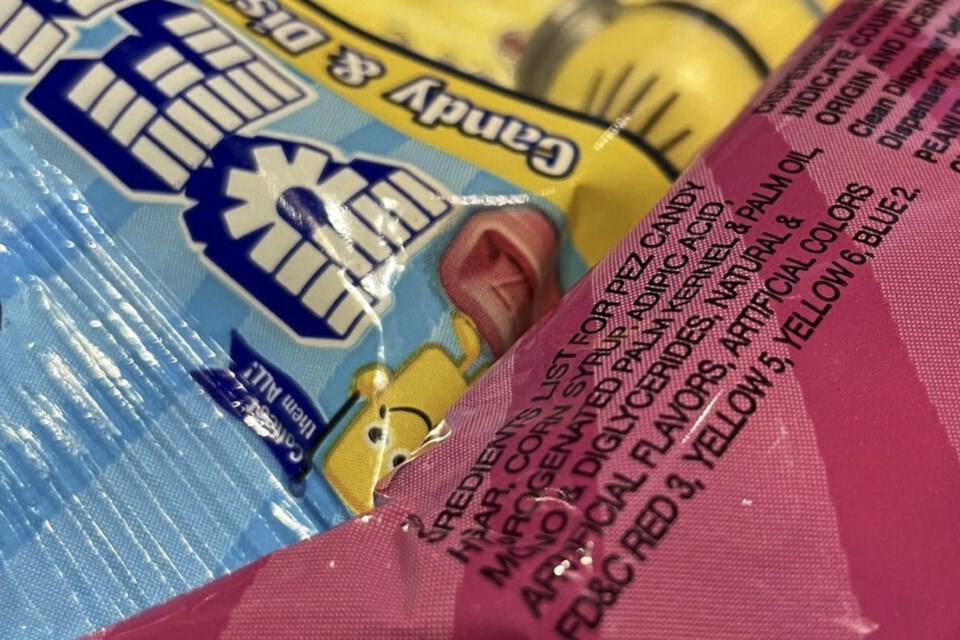TORONTO — Health Canada says a synthetic dye newly banned from the U.S. food supply does not pose a health risk to the general population in Canada.
The federal agency said it won’t echo a ban by the U.S. Food and Drug Administration unless new information comes to light about the additive known as Red 3.
Health Canada said it reviewed a safety evaluation conducted by a joint committee for the United Nations and World Health Organization in 2018.
The joint UN/WHO committee looked at studies that involved humans and animals, and found no safety concerns for the dye as a food additive.
The FDA banned the dye over potential cancer risk, noting two studies found it caused cancer in lab rats with a “rat-specific hormonal mechanism” that does not exist in humans.
It said the measure was a "matter of law,” because a legal provision requires it to ban food additives found to cause cancer in humans or animals.
Health Canada said the health of Canadians was its highest priority and that if new scientific data reveals a human health risk to using the dye in food or drugs, it would take action, “including, if necessary, no longer permitting it to be used as a colouring agent in food and drugs.”
It described the FDA ban as a "legal requirement” triggered by the two rat studies.
“Studies in other animals and in humans did not show these effects, and claims that the use of this colour in food puts people’s health at risk are not supported by the available scientific evidence,” it said in an emailed statement early Wednesday evening.
Also known as erythrosine or FD&C Red No. 3, the dye is primarily used in treats including candy, cakes, cookies and frostings to give foods and drinks a bright, cherry-red colour.
McGill University's Joe Schwarcz says he’d like to see it banned in Canada, not because of safety concerns but because he says it adds no nutritional value while making ultra-processed foods more attractive to consumers.
"There is no health issue with it,” said Schwarcz, director of McGill University's Office for Science and Society.
"The important issue is: when you're going to put something into food, it should be because it serves some sort of benefit, other than just making something look more appealing."
He said there are plenty of natural alternatives with no shadow of toxicity fears such as beet juice extract and anthocyanins extracted from berries.
McMaster University scientist Waliul Khan would not discount the animal studies as easily, saying he’d like to see a warning label on foods containing synthetic dyes, also expressing concern over red dye No. 40, also known as allura red.
Khan, a professor in the department of pathology and molecular medicine, said an animal study he published in 2022 found long-term consumption of allura red can potentially trigger inflammatory bowel diseases.
"When we gave it continuously to a mouse for 12 weeks, it caused some harmful effects in the gut and increased the severity of colitis. But when we gave it once a week, we didn't see that serious effect,” said Khan.
“Of course, there should be more studies, potentially, with the human subject.”
Khan said he is investigating the safety of other dyes and he hoped that increased attention brought by the FDA ban on Red 3 would spur funding for more studies. He noted difficulties in the cost of mounting a trial with a large sample, as well as the ethics of attempting to study on humans a substance known to harm animals.
Health Canada said it considered the findings of the Joint United Nations Food and Agriculture Organization/World Health Organization Expert Committee on Food Additives, which in 2018 re-evaluated Red 3's safety as a food additive and found no safety concern.
It said the expert committee considered toxicological studies in experimental animals, as well as studies that summarized observations in humans.
This report by The Canadian Press was first published Jan. 16, 2025.
Cassandra Szklarski, The Canadian Press

